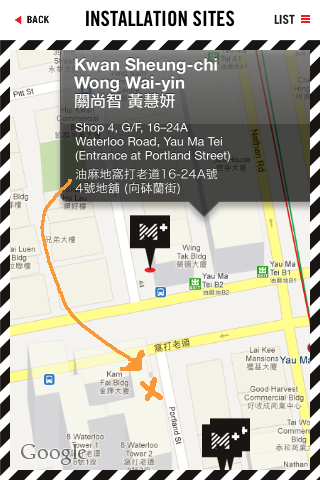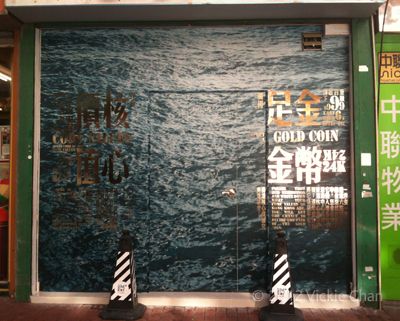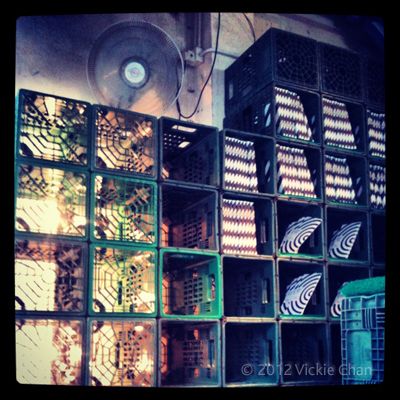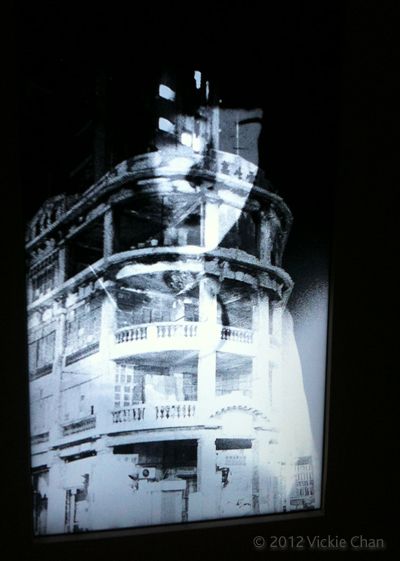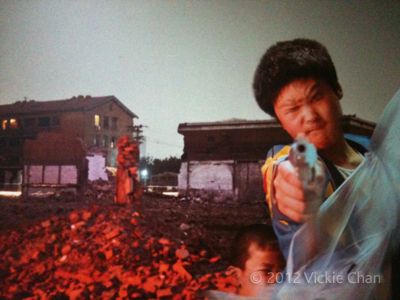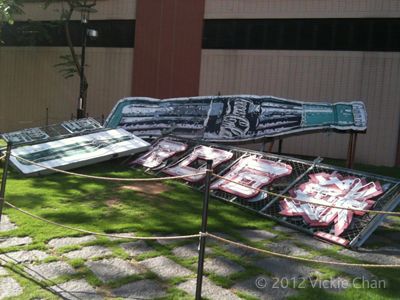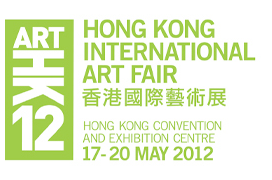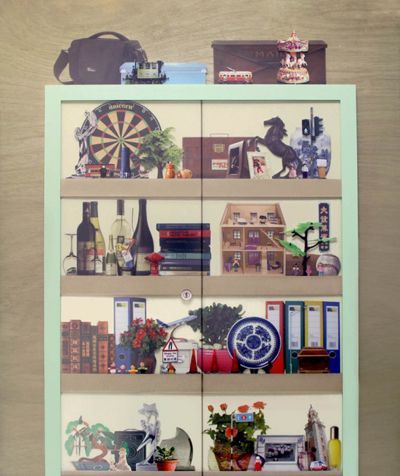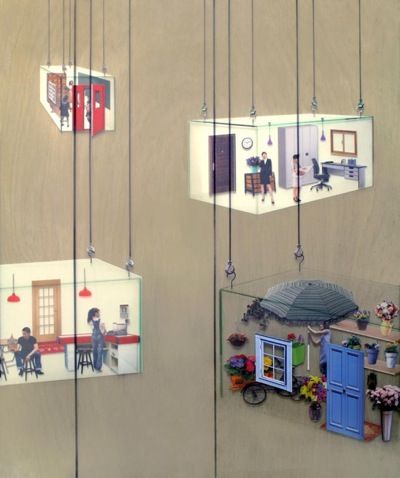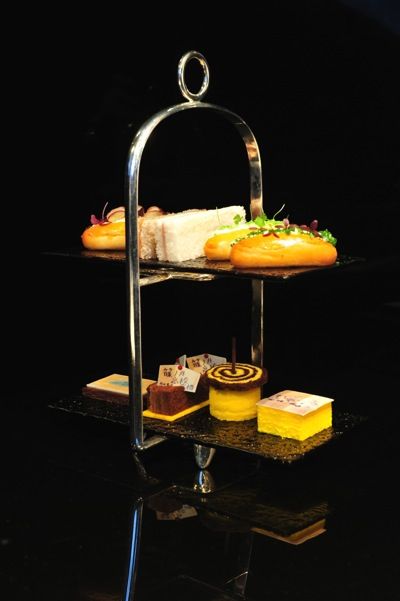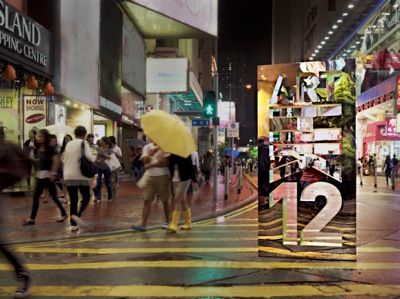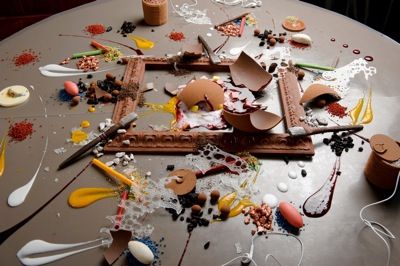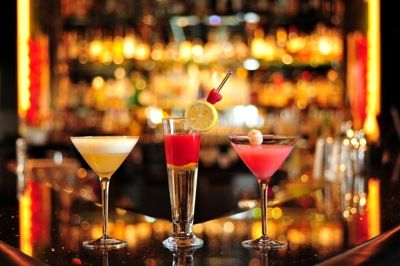A Chantown Art Critique Critter: I'll never forget Marc Quinn's Self (blood head). I was about 19 and doing my art foundation course, when the Sensation exhibition was in London, igniting the Shock Art term which changed the art world and starting a debate first instigated by Marcel Duchamp.
There were parts of that show I liked more than others – I was never a fan of Damien Hirst. But one piece that really made an impact on me was Marc Quinn's Self. He created a bust of himself, in his own blood. What a great concept – it's you, but it's not. And it melts and dissolves. As a youngster I had always been interested in 'signs' that people had been there/ somewhere, like a mustard stain on the carpet reminding me of watching Young and Dangerous (古惑仔) with Greg.
Anyway, it never ceases to amaze me which artists I can meet, as an artist a member of the media. I'm really lucky that I live in Hong Kong, which presumably thanks to it's financial market and the current interest in Asian art, can pull some of the most interesting artists from the far corners of the world, like London and New York. So, I got to meet Marc Quinn in person last week, as his show Held By Desire just opened at White Cube Hong Kong (8 November 2013 - 4 January 2014).
I had hoped to do something more with this post but in the midst of work stuff and renovations, there's no chance. So here's a gift of a little critter, from me to you, totalling snippets, thoughts and images.
The exhibition is centred around Quinn's exploration into how desire shapes our universe and affects man's relationship with nature. That means looking at the boundaries between art, nature and the 'man-made', so Quinn asks us to look at the raw and seemingly mystical elements of our surrounds, in his first exhibition created for Asia and its audiences.
Hunger is one of the first things that Quinn mentions, this simple and vital animal urge which makes us wish to control nature, whether for food or a more sexual satiation. His work, Held by Desire (Chinese Juniper 114), is a lacquered bronze copy of a Bonsai tree, the perfect example of something that humans try to control. Keep it in a small pot, it's a Bonsai. Let it grow in the earth, it's a tree. This sculpture is what Quinn calls a contingent of reality – the real one lives and grows in his garden. Note here, that Quinn used a 3D scanner to create this, not destroying the original in the process.
Another piece that gives a more weird take on reality, is a leg of Serano ham, carved in onyx. A trip to the British Museum inspired this one. Quinn, having seen a carving in bone of a lion, thought about the strange combination of material and subject. The Invention of Carving has a slightly uncomfortable feeling to it, made in a fleshy pink/ white stone that some say looks like flesh, but I say looks like pink Himalayan salt. Either way, there's a discomfort in there, which is added to by the sexy but torturous pose that such ham is viced into, for cutting.
Being an art critter, I won't go into every piece but I can't ignore the huge flesh paintings (they look like photo's but they're not). They are of a size that you feel uncomfortably close to the meat, because at that size, you're either really close or that's whale meat. The fat, tissues and sinews are large and bright as day, thrown together in a pile, which is just raw (of course, but I mean in feeling too) and awkward. Not gross: Awkward. Quinn considers them to be "internal landscapes" tunneling into the body. Which is, I suppose, awkward.
The odalisque of that series is Past, Present, Future, which depicts famous model, Lara Stone (she's married to British comedian, David Walliams) lying on a bed of meat. And she's about seven months pregnant, which explains the title: We are of flesh, we're born of flesh (also moving through it when we're born) and when we die we are bits of flesh, which rot.
When the floor opened up to questions, I'm happy to go first, seated on the front row directly in front of Quinn. "So, did you ask her to come waxed for that photo?" Apparently, "she came that way" but my question was valid – was Quinn looking to make for another shocking image, when usually such poses show no lady parts or are covered with a large fig leave?


+copy.jpg)
































